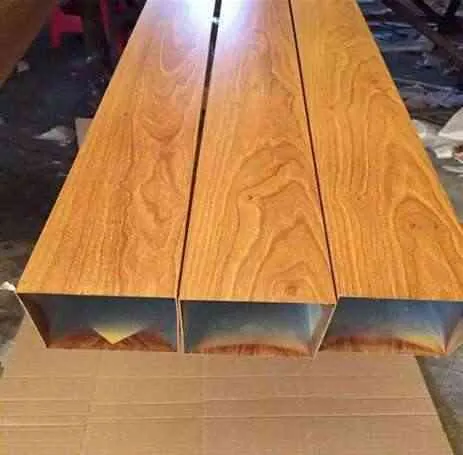What Is Aluminum Alloy Heat Treatment Temper Designation?

When aluminum parts fail in strength or deform too easily, it’s often not the alloy but the temper designation that was overlooked.
Aluminum alloy temper designations describe how the material was mechanically or thermally treated, directly affecting its strength, ductility, and corrosion resistance.
Understanding these codes is not just technical jargon—it determines whether a part performs or fails.
What do aluminum alloy heat treatment temper designations mean?
Many assume aluminum type alone determines performance. But the temper designation tells the full story.
Temper designations indicate the specific processing (like heat treatment or cold working) applied to the alloy, impacting its mechanical properties and behavior.

Each temper code defines the way an alloy is strengthened. When I specify materials for customers, I always emphasize this—not all 6061 aluminum performs the same if it’s T4 vs T6.
Basic Temper Categories
| Code | Category Name | Description |
|---|---|---|
| F | As Fabricated | No special treatment |
| O | Annealed | Softest temper, for forming |
| H | Strain Hardened | Strengthened by cold working (non-heat treatable alloys) |
| W | Solution Heat Treated | Unstable temper, used temporarily before aging |
| T | Heat Treated | Heat treated for strength and stability |
These codes often have numbers attached (like T6), which further specify the process details. For example, T6 means solution heat treated and then artificially aged.
Temper designations only apply to heat-treatable aluminum alloys.False
Strain-hardened tempers (H) apply to non-heat-treatable alloys as well.
The temper designation tells how an aluminum alloy was processed.True
It includes heat treatment, cold work, or both.
Why is temper designation critical for alloy performance?
Ignoring temper codes can lead to product failure, cracking, or deformation under stress.
Temper designation defines the material’s final strength, hardness, formability, and corrosion resistance—crucial for safety and durability.

Every time I select a temper for a part, I look at performance needs. For example, parts that will undergo CNC machining need higher strength (T6), while parts requiring deep bending might need softer temper (O or T4).
How Temper Affects Performance
| Property | Softer Tempers (O, T4) | Harder Tempers (T6, H18) |
|---|---|---|
| Strength | Lower | Higher |
| Ductility | Higher | Lower |
| Formability | Easier to bend | Harder to bend |
| Machinability | Moderate | High (for T6) |
| Fatigue Life | Lower | Higher |
Choosing the wrong temper could result in cracking during bending or failure under stress in load-bearing parts.
One of my customers once requested 6061-T6 for a forming-intensive application. I advised switching to 6061-O for better ductility. It saved them from thousands in rejected parts.
The temper designation does not affect corrosion resistance.False
Different tempers change grain structure and affect surface protection.
Selecting the correct temper ensures performance under mechanical stress.True
Tempering tailors the alloy's strength and flexibility for specific uses.
How are different temper codes like T6, T4 defined?
Without knowing what each temper code stands for, it’s easy to misselect and compromise the project.
Each code like T6 or T4 specifies a sequence of heat treatments such as solution treatment, aging, or annealing that give specific strength and ductility.

Let’s break down a few common ones used in industrial and architectural aluminum alloys like 6061 and 6082:
Temper Code Breakdown
| Code | Meaning | Use Case Example |
|---|---|---|
| T4 | Solution heat-treated, naturally aged | Good formability, moderate strength |
| T5 | Cooled from forming temp and artificially aged | Stronger than T4, medium ductility |
| T6 | Solution heat-treated, then artificially aged | Highest strength, best for machining |
| T7 | Overaged for stability and corrosion resistance | Excellent in stress-sensitive parts |
Example: 6061-T6 vs 6061-T4
6061-T6
- High tensile strength
- Ideal for structural parts
- Harder to bend
6061-T4
- Lower strength
- Easier to form and weld
- Used in auto panels and tubing
Choosing T4 over T6 can mean the difference between a successful bend or a cracked part. I’ve helped many clients navigate this with better outcomes.
T6 temper is softer than T4.False
T6 is heat treated and aged to be much stronger than T4.
T4 temper is naturally aged after solution heat treatment.True
It allows the alloy to regain strength slowly over time without artificial heat.
How do heat treatments affect aluminum properties?
Heat treatment might seem like a back-end process, but it’s the key to unlocking an alloy’s full potential.
Heat treatment alters the internal structure of aluminum, changing its hardness, strength, ductility, and resistance to fatigue and corrosion.

Aluminum alloys change their properties dramatically based on how they’re heated and cooled. The heat treatment process is controlled, and slight changes can result in big differences.
Main Heat Treatment Steps
1. Solution Heat Treatment
- Heats the alloy to dissolve secondary phases.
- Improves potential for hardening.
2. Quenching
- Rapid cooling to lock in the solution phase.
- Creates a supersaturated solid solution.
3. Aging (Natural or Artificial)
- At room temp (natural) or elevated temp (artificial).
- Precipitates particles that harden the metal.
Visualizing Property Changes
| Property | Before Treatment | After T6 Treatment |
|---|---|---|
| Tensile Strength | Low | High |
| Ductility | High | Moderate |
| Hardness | Low | High |
| Fatigue Resistance | Moderate | High |
For example, 7075 aluminum in T6 temper is nearly as strong as steel. I’ve worked on aerospace and high-load structures where this heat treatment was non-negotiable.
Quenching cools aluminum slowly to avoid stress.False
Quenching involves rapid cooling to lock alloying elements in place.
Artificial aging improves strength by forming hardening precipitates.True
It uses heat to speed up the precipitation process and increase hardness.
Conclusion
Temper designations are more than letters and numbers—they define aluminum’s strength, formability, and safety. Knowing the difference between T4 and T6 can make or break your design.



